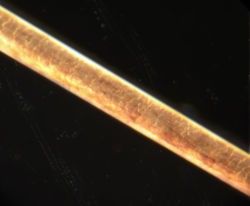Researchers at the Indian Institute of Science Education and Research (IISER) in Kolkata, India, have for the first time implemented a bio-waste-derived electrode as cathode in a quantum-dot-sensitized solar cell.
“The materials to be used as cathode in quantum dot solar cells need to be highly catalytic and electrically conducting to facilitate the electron transfer processes,” explains Professor Sayan Bhattacharyya from the Department of Chemical Sciences at IISER. He adds that the lamellar structure of human hair is likely responsible for the graphene-like sheets in the transformed graphitic porous carbon. “Secondly,” he continues, “since hair contains keratin and other amino acids, carbonizing the acid-digested hair under inert conditions likely retains the nitrogen and sulphur hetero-atoms, which are useful to enhance the catalytic propensity of the produced carbon.”
As the professor explains, the idea behind this research project was to use a bio-waste resource like hair in future energy technologies to achieve a win-win situation — i.e., “A smart way to address environmental concerns and also to produce cheaper devices.”
